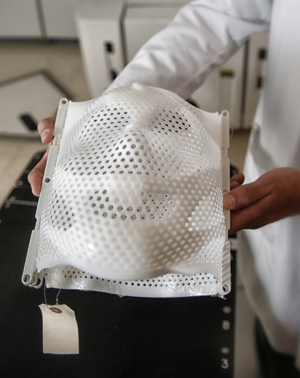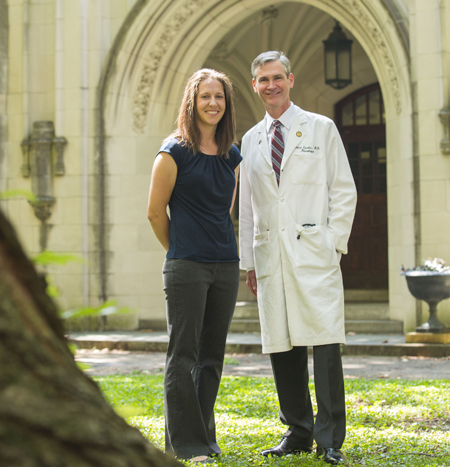Tremor is the most common of all movement disorders and its involuntary nature can hinder an individual’s ability to dress or feed themselves, use a phone or computer, or engage in chores and hobbies.
A Vanderbilt clinical trial is assessing tremor severity of patients with essential tremor or Parkinsonian tremor who are treated with stereotactic radiosurgery (SRS).

“This is the first trial to assess both subjective outcomes — quality of life that the patient reports — while simultaneously measuring objective outcomes — the severity of tremor that the neurologist assesses — with SRS treatment,” said lead investigator Austin Kirschner, M.D., Ph.D., a resident in the Vanderbilt Department of Radiation Oncology.
SRS uses highly focused radiation to destroy the region of the brain that causes tremor. This is the same area targeted by surgical deep brain stimulator (DBS) treatment or neurosurgery.
Patients usually receive SRS when their tremor is not adequately controlled by medication, but they are not candidates for surgery. SRS is a one-time outpatient procedure done without anesthesia.
While much research has been conducted on tremor treatment outcomes with the similar Gamma Knife technology, this is the first study to evaluate SRS outcomes.
“In modern-day radiation therapy, the SRS equipment is becoming more prevalent. One benefit is the noninvasive, tight-fitting plastic mask to position the head. Gamma Knife uses a hard head frame that typically has pins screwed through the skin into the outer part of the skull bone. SRS treatment time can also be shorter than Gamma Knife,” Kirschner said.
The clinical trial, which plans to enroll 30 subjects, will screen patients for suitability to undergo SRS treatment. Approved patients will be assessed every three months for one year following treatment. They will complete a quality of life questionnaire before treatment and at each visit and also be evaluated for tremor severity by a neurologist.
“We are assessing patients to give us an understanding of how quickly the SRS treatment works and determine whether it is as safe and effective as results for Gamma Knife,” Kirschner said. “The noninvasive nature of SRS is a great option for patients, but we want to ensure it is a valid alternative.”
Scott Wylie, Ph.D., assistant professor of Neurology, is also investigating any neuropsychological changes as a result of SRS treatment. Patients will undergo a two-hour testing process before treatment and again at six months.
The trial is a collaboration between the departments of Radiation Oncology, Neurology and Neurosurgery, and collaborators include Anthony Cmelak, M.D., Peter Hedera, M.D., Fenna Phibbs, M.D., MPH, and Joseph Neimat, M.D.














